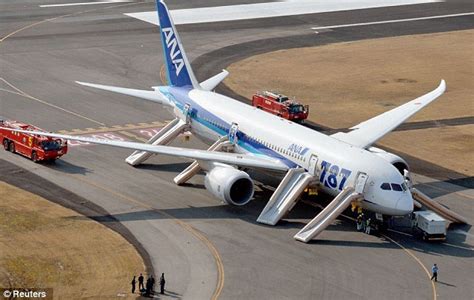
A preliminary investigation into a recent Air India Boeing 787 incident suggests the aircraft’s emergency power system may have activated prematurely, potentially contributing to the loss of critical flight control displays during a flight from Newark to Delhi, according to The Wall Street Journal. The activation of the emergency generator is being scrutinized to determine if it played a role in the pilots’ reported difficulties.
Emergency Power System Activation Under Scrutiny in Air India 787 Incident
The activation of the emergency generator on an Air India Boeing 787 Dreamliner is under investigation following a recent incident that saw pilots temporarily lose primary flight control displays. According to The Wall Street Journal, preliminary findings suggest the emergency power system may have activated before the incident occurred during the flight from Newark to Delhi. This unexpected activation is now a focal point in understanding the sequence of events that led to the loss of the displays and the subsequent challenges faced by the flight crew.
The incident occurred on a flight from Newark Liberty International Airport (EWR) to Indira Gandhi International Airport (DEL) in Delhi. While the exact details of the anomalies observed by the pilots remain under investigation, the central issue appears to be linked to the electrical systems and the automatic engagement of backup power. The emergency generator’s premature activation raises questions about the overall integrity of the electrical system architecture and whether it responded correctly under the conditions encountered.
The report in The Wall Street Journal, citing sources familiar with the preliminary investigation, highlights that investigators are examining several possibilities. These include potential malfunctions in the primary electrical system, software glitches, or even external factors that might have triggered the emergency power activation.
According to Boeing’s website, the 787 Dreamliner is a technologically advanced aircraft, known for its fuel efficiency and passenger comfort. However, the heavy reliance on electrical systems for various functions makes it crucial to understand any anomalies that could impact these systems’ reliability. The emergency generator is designed to provide backup power to essential systems in the event of a primary power failure. If it activates when it is not supposed to, this may indicate a broader underlying issue.
The incident has raised concerns within the aviation industry and among safety regulators. Understanding the precise cause of the display failure and the role of the emergency power system is paramount for preventing similar occurrences in the future. The investigation will likely involve detailed examination of the aircraft’s flight data recorders, interviews with the flight crew, and a thorough inspection of the aircraft’s electrical systems.
The Air India incident is not the first time the Boeing 787 Dreamliner has faced scrutiny regarding its electrical systems. In the past, issues related to battery failures and electrical fires led to temporary grounding of the aircraft. Although the emergency generator system is distinct from the earlier battery issues, this latest incident serves as a reminder of the complex nature of modern aircraft electrical systems and the importance of diligent maintenance and oversight.
Aviation safety experts emphasize that the redundancy built into modern aircraft systems is designed to mitigate risks associated with component failures. However, when multiple systems are affected, or when backup systems activate unexpectedly, the situation can become challenging for flight crews. The Air India pilots are commended for their professionalism and adherence to procedures, which ensured the safe continuation and completion of the flight.
As the investigation continues, all eyes will be on the findings of the regulatory authorities and Boeing. The outcome of this investigation could potentially lead to new safety recommendations, software updates, or even modifications to the aircraft’s electrical systems. For now, the focus remains on gathering all relevant data to determine the root cause of the incident and to ensure that appropriate corrective actions are taken.
Air India and Boeing have acknowledged the incident and stated their commitment to cooperating fully with the investigation. Both companies recognize the importance of maintaining the highest levels of safety and reliability in their operations. A spokesperson for Boeing stated, “We are aware of the report and are working closely with the concerned authorities to provide any necessary assistance.” Air India also released a statement emphasizing their commitment to passenger safety and their full cooperation with the investigation.
Detailed Breakdown of the Incident and Investigation
The Air India flight AI102, a Boeing 787-8 Dreamliner registered VT-ANY, departed from Newark Liberty International Airport (EWR) en route to Indira Gandhi International Airport (DEL). While en route, the pilots reported experiencing a temporary loss of multiple flight control displays. This involved the screens that provide essential flight information, such as altitude, speed, heading, and navigational data. The loss of these displays can significantly increase the workload on the flight crew and can potentially compromise their ability to maintain precise control of the aircraft.
Initial reports suggest that the emergency generator, also known as the Auxiliary Power Unit (APU) or Ram Air Turbine (RAT) depending on the specifics of the activation and generator type, activated unexpectedly during the flight. The emergency generator is designed to supply electrical power to critical systems in the event of a failure of the primary power sources. Its premature activation could indicate an underlying problem with the aircraft’s electrical system or the logic controlling it.
The investigators are meticulously examining the aircraft’s flight data recorders (FDR) and cockpit voice recorders (CVR) to reconstruct the sequence of events leading up to the display failures. The FDR contains a vast amount of data about the aircraft’s performance, including airspeed, altitude, engine parameters, and control surface positions. The CVR records conversations between the pilots and any communications with air traffic control. Analysis of this data can help investigators understand what happened in the cockpit and how the pilots responded to the situation.
In addition to the flight recorders, investigators will be examining the aircraft’s maintenance records to identify any previous electrical system issues or anomalies. They will also be interviewing the flight crew to gather their firsthand accounts of the incident. The pilots’ experience and insights can provide valuable context for understanding the technical data from the flight recorders.
The investigation is being conducted by a team of experts from the Directorate General of Civil Aviation (DGCA) of India, the Federal Aviation Administration (FAA) of the United States, and Boeing. The DGCA is the regulatory authority responsible for overseeing aviation safety in India, while the FAA has jurisdiction over aircraft manufactured in the United States. Boeing, as the manufacturer of the 787 Dreamliner, is providing technical expertise and support to the investigation.
Context of 787 Electrical Systems and Past Issues
The Boeing 787 Dreamliner is known for its advanced technology, including its extensive use of electrical systems. Unlike previous generations of aircraft that relied heavily on hydraulic and pneumatic systems, the 787 uses electrical power for many functions, including flight controls, braking, and air conditioning. This design approach offers several advantages, such as improved fuel efficiency and reduced maintenance costs. However, it also makes the aircraft more reliant on the integrity and reliability of its electrical systems.
In the early years of the 787’s service, there were several incidents involving battery fires and overheating. These incidents led to a temporary grounding of the aircraft in 2013 while Boeing developed and implemented a solution. The issue was traced to the lithium-ion batteries used to power the APU. The redesigned battery system included improved insulation, venting, and monitoring to prevent future incidents.
The current incident involving the emergency generator is distinct from the earlier battery issues, but it underscores the ongoing importance of maintaining and monitoring the 787’s electrical systems. The emergency generator is designed to provide a backup source of power in the event of a failure of the primary generators driven by the aircraft’s engines. It typically consists of either an APU, which is a small gas turbine engine, or a Ram Air Turbine (RAT), which is a small propeller that is deployed into the airstream to generate electricity.
The specific type of emergency generator and its activation logic are critical to understanding the current incident. If the generator activated prematurely, it could indicate a fault in the system that monitors the primary power sources or a glitch in the software that controls the generator’s activation.
Potential Causes and Implications
Several potential causes could explain the premature activation of the emergency generator and the subsequent loss of flight control displays. These include:
- Faulty Sensors: Sensors that monitor the primary power sources may have provided incorrect readings, leading the system to believe that a power failure had occurred.
- Software Glitch: A software error in the system that controls the emergency generator could have caused it to activate prematurely.
- Wiring Issue: A short circuit or other wiring problem could have interfered with the signals controlling the generator.
- Component Failure: A failure of a component within the emergency generator system itself could have caused it to activate unexpectedly.
The implications of the incident are significant for several reasons. First, it raises concerns about the reliability of the 787’s electrical systems and the potential for similar incidents to occur in the future. Second, it highlights the importance of proper maintenance and monitoring of these systems to detect and prevent potential problems. Third, it underscores the need for thorough investigation and analysis to determine the root cause of the incident and to implement appropriate corrective actions.
If the investigation reveals a systemic issue with the 787’s electrical systems, it could lead to new safety recommendations, software updates, or even modifications to the aircraft’s design. Regulatory authorities may also require airlines to implement enhanced inspection and maintenance procedures to ensure the continued safe operation of the aircraft.
The incident also serves as a reminder of the critical role that flight crews play in ensuring the safety of air travel. The Air India pilots are commended for their professionalism and their ability to maintain control of the aircraft despite the loss of critical flight control displays. Their actions demonstrate the importance of proper training and procedures for dealing with unexpected situations.
Industry and Regulatory Response
The Air India incident has prompted a swift response from the aviation industry and regulatory authorities. The DGCA, FAA, and Boeing are working closely together to investigate the incident and to determine its cause. The investigation is expected to take several weeks or months to complete, as investigators gather and analyze all relevant data.
In the meantime, airlines that operate the Boeing 787 Dreamliner are likely to be reviewing their maintenance and inspection procedures to ensure that their aircraft are in good working order. Regulatory authorities may also issue advisories or directives to airlines, providing guidance on how to prevent similar incidents from occurring.
Boeing has stated its commitment to working with the authorities to investigate the incident and to provide any necessary assistance. The company recognizes the importance of maintaining the highest levels of safety and reliability in its aircraft.
The Air India incident is a reminder of the complex and challenging nature of aviation safety. Modern aircraft are highly sophisticated machines that rely on a complex network of systems and components. Ensuring the safety of air travel requires a continuous effort to monitor, maintain, and improve these systems.
Future Steps and Preventative Measures
As the investigation into the Air India incident progresses, several key steps will be taken to determine the root cause and prevent future occurrences:
- Comprehensive Data Analysis: Investigators will continue to analyze the flight data recorders (FDR) and cockpit voice recorders (CVR) to reconstruct the sequence of events and identify any anomalies.
- Component Inspection: The aircraft’s electrical systems, including the emergency generator and related components, will undergo thorough inspection and testing to identify any potential faults or failures.
- Software Review: The software that controls the emergency generator and other electrical systems will be reviewed for any potential glitches or errors.
- Pilot Interviews: The flight crew will be interviewed in detail to gather their firsthand accounts of the incident and to understand their actions in the cockpit.
- Maintenance Record Review: The aircraft’s maintenance records will be reviewed to identify any previous electrical system issues or anomalies.
- Collaboration with Manufacturers and Regulators: Boeing and regulatory authorities such as the FAA and DGCA will continue to collaborate closely to share information and expertise.
Based on the findings of the investigation, several preventative measures may be implemented to reduce the risk of similar incidents in the future. These include:
- Enhanced Maintenance Procedures: Airlines may be required to implement more frequent or more detailed inspections of the 787’s electrical systems.
- Software Updates: Boeing may release software updates to address any identified glitches or errors in the system that controls the emergency generator.
- Component Redesign: If a specific component is found to be prone to failure, it may be redesigned or replaced with a more reliable alternative.
- Training Enhancements: Flight crews may receive additional training on how to respond to electrical system failures and other unexpected situations.
- Improved Monitoring Systems: New monitoring systems may be developed to provide early warning of potential electrical system problems.
The Air India incident serves as a valuable learning opportunity for the aviation industry. By thoroughly investigating the incident and implementing appropriate corrective actions, it is possible to improve the safety and reliability of modern aircraft and to reduce the risk of future accidents.
The Passenger Perspective
While the investigation focuses on technical aspects and system failures, it’s crucial to acknowledge the passenger perspective. Incidents like the Air India 787 event can understandably cause anxiety and concern among travelers. Clear and transparent communication from airlines and regulatory bodies is paramount in reassuring passengers about their safety.
Airlines should proactively provide updates on the investigation’s progress and any measures taken to prevent recurrence. This builds trust and confidence in the airline’s commitment to safety. Furthermore, robust safety protocols and well-trained flight crews are essential in ensuring passenger well-being during unforeseen events.
From a passenger’s point of view, understanding the redundancy built into modern aircraft systems can be reassuring. Knowing that backup systems are in place to mitigate risks associated with component failures provides a sense of security. Airlines can enhance passenger confidence by communicating these safety features and protocols effectively.
The Broader Implications for Aviation Safety
The Air India 787 incident underscores the ongoing need for vigilance and continuous improvement in aviation safety. As aircraft become increasingly complex and reliant on advanced technology, it is essential to maintain a robust safety culture that prioritizes prevention, monitoring, and rapid response.
The incident highlights the importance of collaboration among manufacturers, airlines, and regulatory authorities. Sharing information, expertise, and best practices is crucial for identifying potential safety risks and implementing effective solutions.
Furthermore, the incident emphasizes the need for ongoing research and development in the field of aviation safety. New technologies and techniques are constantly being developed to improve the reliability of aircraft systems and to enhance the ability of flight crews to respond to unexpected situations.
The Air India incident is a reminder that aviation safety is a continuous journey, not a destination. By learning from past incidents and embracing a culture of continuous improvement, the aviation industry can ensure that air travel remains one of the safest forms of transportation.
Frequently Asked Questions (FAQ)
-
What happened during the Air India flight AI102 from Newark to Delhi?
Pilots experienced a temporary loss of multiple flight control displays during the flight. Preliminary investigations suggest the aircraft’s emergency power system may have activated prematurely, contributing to the display loss.
-
What is the emergency power system and why is its activation being investigated?
The emergency power system, typically an Auxiliary Power Unit (APU) or Ram Air Turbine (RAT), is designed to provide backup electrical power to critical systems in the event of a primary power failure. Its premature activation raises concerns about potential malfunctions in the aircraft’s electrical system or the logic controlling it.
-
What are the possible causes of the emergency power system activating unexpectedly?
Potential causes include faulty sensors, software glitches, wiring issues, or a component failure within the emergency generator system itself.
-
Who is involved in the investigation of this incident?
The investigation involves experts from the Directorate General of Civil Aviation (DGCA) of India, the Federal Aviation Administration (FAA) of the United States, and Boeing, the aircraft manufacturer.
-
What steps are being taken to prevent similar incidents from happening in the future?
Potential preventative measures include enhanced maintenance procedures, software updates, component redesign, training enhancements for flight crews, and improved monitoring systems. The exact measures will depend on the findings of the investigation.
-
Has the Boeing 787 Dreamliner had electrical issues in the past?
Yes, in the early years of the 787’s service, there were incidents involving battery fires and overheating, leading to a temporary grounding of the aircraft in 2013. The current incident involving the emergency generator is distinct from the earlier battery issues.
-
How does this incident affect passenger safety and confidence?
The incident can understandably cause anxiety among travelers. Clear and transparent communication from airlines and regulatory bodies is crucial in reassuring passengers about their safety and the steps being taken to prevent future occurrences.
-
What is the role of the flight data recorder (FDR) and cockpit voice recorder (CVR) in the investigation?
The FDR contains a vast amount of data about the aircraft’s performance, including airspeed, altitude, engine parameters, and control surface positions. The CVR records conversations between the pilots and any communications with air traffic control. Analysis of this data can help investigators understand what happened in the cockpit and how the pilots responded to the situation.
-
What kind of training do pilots receive to handle situations like the one experienced on the Air India flight?
Pilots receive extensive training on handling various emergency situations, including electrical system failures and loss of flight control displays. This training includes simulator exercises and classroom instruction on aircraft systems and procedures.
-
What is Air India and Boeing’s response to the incident?
Both Air India and Boeing have acknowledged the incident and stated their commitment to cooperating fully with the investigation. They recognize the importance of maintaining the highest levels of safety and reliability in their operations.
-
What is the role of the Ram Air Turbine (RAT) in an emergency power system?
The Ram Air Turbine (RAT) is a small turbine that is deployed from the aircraft during an emergency to generate electrical power. It uses the airflow created by the aircraft’s movement to spin a generator, providing power to essential systems if the main engines and auxiliary power unit (APU) fail. Not all 787s use a RAT as the APU might be the primary backup.
-
What kind of information will be gleaned from pilot interviews in the course of the investigation?
Pilot interviews offer first-hand accounts of the incident, including the order of events, the nature of the display failures, the actions taken, and any unusual indications or warnings received. This qualitative data supplements the quantitative data from the flight recorders.
-
How will the aircraft’s maintenance records be used in the investigation?
Maintenance records provide a history of any previous electrical system issues, repairs, or inspections. This information can help investigators identify potential pre-existing conditions that may have contributed to the incident.
-
Could weather conditions or external factors have played a role in the emergency power system activation?
While less likely, investigators will consider external factors such as severe turbulence or atmospheric electrical disturbances that could potentially impact the aircraft’s electrical systems. However, these factors are typically ruled out early in the investigation if no supporting evidence is found.
-
What is the long-term impact of this incident on the Boeing 787 Dreamliner fleet?
The long-term impact will depend on the findings of the investigation. If a systemic issue is identified, it could lead to design changes, software updates, or enhanced maintenance procedures for the entire 787 fleet. Even if the issue is isolated, the incident will likely result in increased scrutiny of the 787’s electrical systems.









